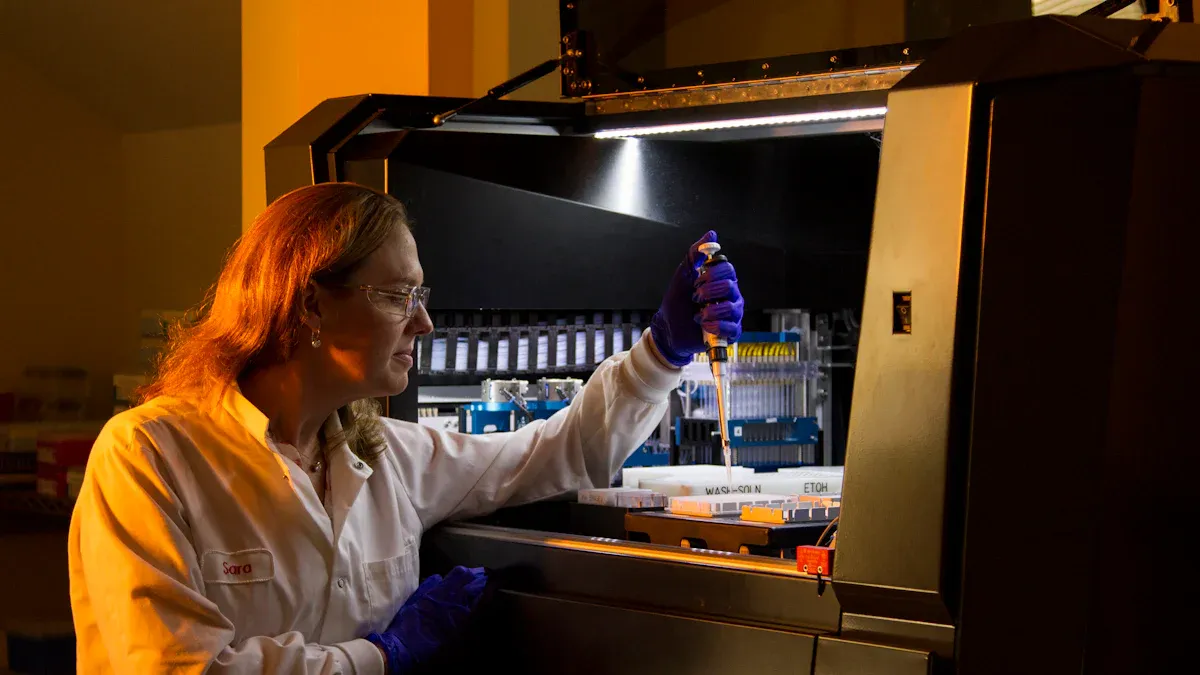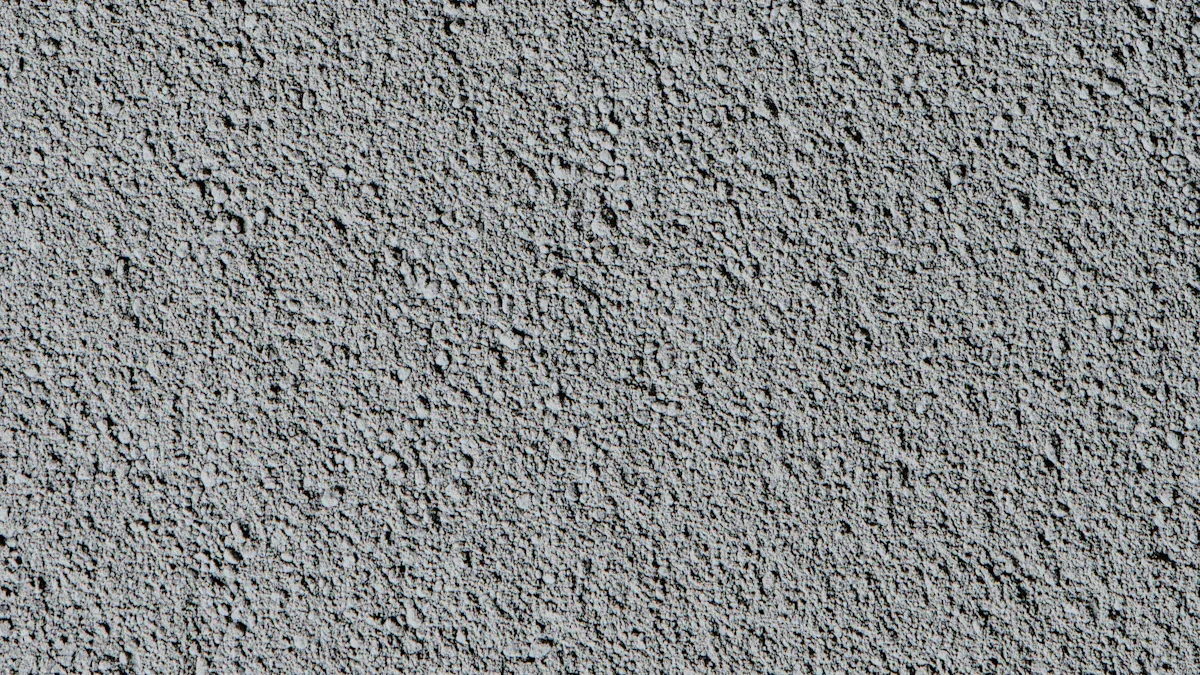How Surface Finishing Methods Improve Nitinol Tubing Biocompatibility

Surface treatments significantly enhance nitinol tubing biocompatibility, improving its performance inside the body. These treatments modify the surface to prevent corrosion and reduce the release of nickel ions. When nitinol tubing is implanted, nickel ions can leach out, potentially causing adverse reactions in patients. Research demonstrates that polishing and applying coatings to nitinol tubing effectively lower nickel ion levels in the surrounding tissue and reduce inflammation. The table below illustrates how various surface treatments impact medical devices:
Surface Treatment | Thrombogenicity (TAT III marker) | Platelet Adhesion | Endothelial Cell Proliferation |
|---|---|---|---|
Electropolished/Blue Oxide | Much lower | Less | More |
Native Nitinol Surface | Higher | More | Less |
Enhancing nitinol tubing biocompatibility through these surface modifications is crucial for making medical devices safer. Advanced surface technologies not only protect patients but also optimize the functionality of nitinol tubing within the body.
Key Takeaways
Surface finishing methods like electropolishing and coatings help stop nickel ions from coming out. This makes nitinol tubing safer. It also lowers the chance of allergic reactions.
Treatments make smooth and strong oxide layers. These layers protect the tubing from rust. They also help the tubing last longer in the body.
Treated nitinol tubing works better with blood and tissue. It lowers the risk of blood clots. It also helps healthy cells grow.
Different surface treatments work best for different medical devices. Picking the right method makes devices safer and work better.
Advanced surface finishes help medical devices work better. They help people heal faster. They also keep patients safer for a long time.
Nitinol Tubing Biocompatibility Challenges
Corrosion and Nickel Ion Release
Nitinol tubing has some problems when used in medical devices. One big problem is corrosion because nitinol has a lot of nickel. If the tubing corrodes, nickel ions can get into the body. This can be harmful and cause allergies in some people. Studies show that tubing without treatment lets out more nickel ions and does not fight corrosion as well as polished or coated tubing. The thickness and quality of the oxide layer on the surface are important for stopping corrosion. If the oxide layer is thick and untreated, more nickel can come out, especially if the tubing bends or stretches.
Nickel ion release from nitinol tubing can hurt cells and cause allergies. About 17.5% of people are sensitive to nickel. This can cause skin rashes or worse problems in the body. The FDA says to test for nickel release for 30 to 60 days to make sure medical devices are safe.
Surface finishing methods like electropolishing and passivation smooth out the tubing. These treatments help stop pitting corrosion and lower the amount of nickel that comes out. Special coatings, like silicon carbide, add a shield that makes the tubing even better at fighting corrosion and helps it work well with blood. Good surface finishing is needed to keep nitinol tubing strong and safe for patients.
Untreated nitinol tubing is more likely to:
Get microcracks and rough spots
Let out more nickel ions
Have less protection from corrosion
Fail strength tests because it is weaker
Blood and Tissue Compatibility
Nitinol tubing must be safe with blood and tissue for medical devices to work well. Nickel ions can affect how the tubing works with blood and tissue. Too much nickel can cause swelling, allergies, or even poison the body. If the tubing is rough or has corrosion, it can make blood clots more likely.
Long-term studies show that electropolished nitinol tubing lets out less nickel and stays strong and bendy. This makes it good for implants that need to work well with blood and tissue. Things like pH and oxygen in the body can change how much nickel comes out. If the pH is low or there is more stress, more nickel can come out and make tissue problems worse.
Surface treatments like electropolishing and special coatings help stop proteins and platelets from sticking. This lowers the chance of blood clots and helps nitinol tubing work better in the body.
Nitinol tubing works best when nickel ion release is controlled, the surface is smooth, and it does not cause bad reactions in the body. These steps help medical devices stay safe and do their job inside people.
Surface Treatments for Nitinol Tubing

Nitinol tubing needs special surface work to be safe for medical use. Different treatments change how nitinol acts and make it better for the body. These changes help nitinol tubing work safely and last longer inside people.
Electropolishing and Mechanical Polishing
Electropolishing and mechanical polishing are two ways to treat nitinol tubing. Mechanical polishing uses rough materials to smooth the tubing. This can leave dirt and make the surface uneven. Electropolishing uses electricity in a liquid to fix rough spots. It makes one smooth layer of pure austenite. This layer is easy to clean and keep germ-free. Electropolishing also makes a nickel-free oxide layer. This helps stop nickel from coming out and makes the tubing safer for the body. Devices with electropolished tubing help cells grow and lower blood clot risks.
Surface Treatment | Surface Layers | Surface Quality | Contaminant Removal |
|---|---|---|---|
Mechanical Polishing | Up to 7 | Distorted crystal structure | Surface impurities embedded |
Electropolishing | 1 | Pure austenite, smooth finish | Optimal cleanability and sterility |
Plasma and Magnetoelectropolishing
Plasma treatments use special gas to change the tubing’s surface. This helps the tubing last longer and not wear out fast. Magnetoelectropolishing (MEP) is a new way that uses magnets with electropolishing. MEP takes nickel off the surface and makes a nickel-free oxide layer. This lowers nickel release and helps stop corrosion. MEP-treated tubing helps cells grow and lowers bad reactions. Plasma helps with strength, but MEP is better for stopping nickel release and making tubing safer.
Heat and Oxidation Treatments
Heat and oxidation treatments change how nitinol tubing bends and holds up. Heat treatment can make the tubing stronger or more flexible. If heat is used in air, it can make oxide layers like TiO2. This can lower how well the tubing fights corrosion and let out more nickel. Using a vacuum or special gas during heat treatment stops bad oxidation and keeps the surface good. Controlling these treatments is important to keep the tubing strong and safe.
Heat treatment settings change nitinol’s surface and how it works.
Oxidation in air can make the surface weaker and less safe.
Using a vacuum or special gas keeps the tubing strong and stable.
Anodization and Coatings
Anodization and special coatings are new ways to treat nitinol tubing. Anodization makes a thick TiO2 layer with almost no nickel. This layer likes water and stops corrosion, so less nickel comes out. Coatings like tantalum oxide or parylene block nickel from leaking. These coatings help the tubing work better with blood and tissue for a long time. Using both anodization and coatings makes a strong and safe surface for medical devices.
Surface Treatment | Key Benefits |
|---|---|
Electropolishing | Reduces surface roughness, enhances corrosion resistance, improves biocompatibility |
Mechanical Polishing | Used for initial surface refinement |
Chemical Passivation | Forms protective oxide layer, improves durability and corrosion resistance |
Surface changes like anodization and coatings help nitinol tubing meet medical rules and make devices safer and better.
Biocompatibility Improvements from Surface Treatments

Reduced Nickel Ion Leaching
Nitinol tubing has nickel, which can be a problem if it gets into the body. Surface treatments like electropolishing and anodization make a strong titanium oxide layer. This layer acts like a shield and keeps nickel inside. When nickel does not come out, patients have fewer allergic reactions. Medical devices with these treatments let out much less nickel. This makes the tubing safer for people who need it for a long time. People with allergies or sensitive tissue get extra protection. The strong oxide layer also stops tissue from getting irritated and helps healing.
Enhanced Corrosion Resistance
Corrosion can make nitinol tubing weak and let out bad ions. Surface treatments like electropolishing and chemical etching help stop corrosion. Studies show that electropolished tubing is much stronger than oxidized tubing. For example, electropolished tubing did not break at 1000 mV, but oxidized tubing broke at lower voltages. This means the tubing lasts longer in the body. The smooth finish makes the oxide layer stronger and removes weak spots. These changes make the tubing safer and better at fighting corrosion. The tubing keeps its shape and strength, which is important for bending or flexing inside the body.
Improved Endothelialization
Endothelialization is when blood vessel cells grow over the tubing. This helps the tubing heal and work well with tissue. Surface treatments like electropolishing and plasma treatment make the tubing smoother. Smooth tubing helps cells stick and grow faster. When the tubing feels right, cells cover it quickly. This lowers the chance of blood clots and helps the tubing fit in with tissue. The table below shows how different treatments help cells grow:
Surface Treatment | Endothelial Cell Proliferation | Notes |
|---|---|---|
Electropolished/Blue Oxide | High | Smoother surface, less nickel ion release |
Native Oxide | Low | Rougher surface, more nickel ion release |
Plasma Treatment | High | Optimized texture for cell attachment |
Avidin-Biotin Modification | Very High | Special chemistry for strong cell attachment |
Devices with better endothelialization heal faster and work better in the body. Patients have fewer problems, and the tubing becomes part of the tissue quickly. This helps both biocompatibility and corrosion resistance.
Lower Thrombogenicity and Protein Adhesion
Thrombogenicity is the chance that blood clots form on the tubing. Protein sticking can also cause clots to start. Surface treatments help lower both risks. Some coatings release nitric oxide or have phosphate ions to stop clots. Other treatments add anticoagulant proteins to keep blood moving. Tests show that treated tubing forms fewer clots and attracts less protein. This is important for hemocompatibility and thrombogenicity in medical devices. Patients with these devices have a lower risk of blood clots. The tubing stays clean and works well with blood and tissue.
Anticoagulant proteins on the tubing lower platelet sticking.
Phosphate ion coatings make the surface very slippery, so clots do not form.
Platelet inhibitors and nitric oxide coatings stop platelets from sticking together.
Treated tubing has less protein buildup and better hemocompatibility.
These changes help medical devices last longer and keep patients safe. The tubing does not clot and works better with the body.
Clinical Impact and Method Comparison
Device Safety and Longevity
Nitinol tubing is used in many medical devices. Surface finishing methods help these devices last longer. These methods include electropolishing, passivation, and coatings. They make the tubing smooth and free of defects. This helps stop corrosion and nickel ion release. Patients are less likely to have bad reactions. Tests show treated tubing can bend millions of times without breaking. This means the devices stay strong for many years.
Surface-treated nitinol tubing helps patients do better. Implants with these treatments work well and have fewer problems. Some devices have a success rate higher than 96%. Patients heal faster and feel less pain after surgery. There are fewer problems after the operation. The tubing keeps its shape and bends easily. This helps the device work in hard-to-reach places in the body.
Outcome Metric | Surface-Treated Nitinol Tubing Benefits |
|---|---|
Biocompatibility | Lower nickel release, less inflammation, better healing |
Corrosion Resistance | Stable oxide layer, less nickel leaching |
Durability | Survives millions of cycles, resists fatigue |
Patient Outcomes | Faster recovery, less pain, fewer complications |
Device Reliability | Maintains shape and flexibility |
Selection for Medical Applications
Doctors and engineers pick nitinol tubing for special reasons. The right surface treatment depends on what the device does. It also depends on where it goes in the body. A smooth finish stops rust and nickel ion release. This makes the device safer for people. Electropolishing and coatings help stop corrosion. They also make the tubing work better with the body. After laser cutting, electropolishing removes sharp edges. It also makes a safe oxide layer.
Different medical needs need different surface treatments. Heart implants and bone devices need special finishes. Custom nitinol devices also need special care. Suppliers must give good paperwork and help. This is needed to meet strict medical rules. New treatments like magnetoelectropolishing work even better. They help stop corrosion and make tubing last longer.
Making these devices can be hard. Special tools and skilled workers are needed. This can make costs go up. It is hard to make a lot of tubing at once. There may not be enough raw materials. Medical rules are very strict. Not every method makes a perfect oxide layer. Some tests do not match what happens in real life. Even with these problems, treated nitinol tubing is safer. It lasts longer and helps patients get better results.
Surface finishing methods help make nitinol tubing safer for patients. These treatments make the tubing work better with the body. They lower how much nickel comes out and help devices last longer. Advanced ways like electropolishing, magnetoelectropolishing, and special coatings lower risks for patients. They also help the tubing fight rust and damage. Nitinol tubing with these finishes helps patients do better. New ideas and picking the right method give doctors better devices. This helps every patient get good results.
FAQ
What is nitinol tubing used for in medicine?
Doctors use nitinol tubing in many implants. It is found in stents and guidewires. The tubing can bend and then go back to its shape. This helps when devices need to move inside the body.
How do surface treatments make nitinol tubing safer?
Surface treatments put a smooth, strong layer on the tubing. This layer keeps nickel from leaking out. Patients have fewer allergies and less swelling.
Which surface treatment works best for biocompatibility?
Electropolishing usually gives the best results. It takes away rough spots and makes a clean oxide layer. This helps the tubing fight rust and lowers nickel release.
Can surface finishes prevent blood clots?
Yes. Some coatings and treatments make the tubing less sticky. Proteins and platelets do not stick as much. This lowers the chance of blood clots on the device.
Do all medical devices need the same surface treatment?
No. Each device needs something different. Heart implants may need special coatings. Bone devices might need another finish. Doctors and engineers pick the best method for each device.
See Also
Discovering How Nitinol Tubing Benefits Medical Device Technology
The Importance Of Nitinol Tubing In Minimally Invasive Surgery
Improving Catheter And Implant Function With Nickel-Titanium Tubing
Evaluating Tensile Strength Differences Between Nitinol And Stainless Steel

